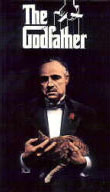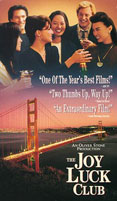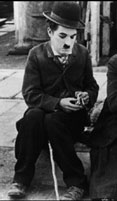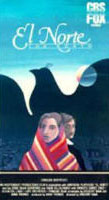|
Digital History>Topics>Film
Immigration and the Movies
Digital
History TOPIC ID 133
Many of our most memorable images of the past come from movies. Films set in the past provide a vivid record of history: of the "look," the clothing, the atmosphere, and the mood of past eras. Nevertheless, movies remain a controversial source of historical evidence. Because moviemakers are not held to the same standards as historians, historical films often contain inaccuracies and anarchronisms. Further, films frequently blur the line between fact and fiction and avoid complex ideas that cannot be presented visually. Of course, no one goes to a movie expecting a history lesson. Feature films are a form of art and entertainment, and screenwriters frequently take license with historical facts in order to enhance a movie's appeal and drama. Feature films rely on a variety of techniques that tend to distort historical realities. For one thing, popular films tend to be formulaic; they draw upon a series of conventions, stereotypes, and stock characters to tell a story. Also, films tend to "personalize" history by using individual characters to illustrate larger social processes and conflicts. Still, if analyzed critically, films can provide a valuable window onto the past. History is not simply an accumulation of objective facts; it is also an attempt to interpret facts. Like a novel, a film can offer an interpretation of the past. Indeed, filmmakers' freedom can give them an opportunity to explore issues of character and psychology that historians sometimes avoid. Immigration has long been a popular cinematic theme. The birth of film coincided with an unprecedented wave of global immigration. Immigrants formed a large share of film's early audience, and many early films, including the first "talkie," The Jazz Singer, dramatized and personalized the immigrant experience. Carlos E. Cortés (in Robert Brent Toplin, ed., Hollywood as Mirror (Westport, Conn.: Greenwood Press, 1993), argues that Hollywood films offer a great deal of valuable information on the subject of immigration. Silent movies, for example, can provide clues about popular attitudes toward immigrants, about immigrants' aspirations, and about the obstacles immigrants encountered as they sought to enter new societies. In addition, silent films provide vivid glimpses of ethnic neighborhoods and enclaves. A number of films released during World War I address the issue of national loyalty. They ask whether immigrants would remain loyal to their place of birth or identify with their new homeland. During the 1920s, many popular films emphasized themes of assimilation and acculturation. Such films as Abie's Irish Rose (1929) celebrated ethnic intermarriage as a vehicle of assimilation, while other popular films, such as The Jazz Singer (1927), praise characters who overcome the pressure to maintain ethnic or religious traditions or refuse to follow their father's vocation. During the Great Depression's earliest years, when the conventional ladder of success seemed to have broken down, many films looked at crime as a vehicle for upward mobility. The popular urban gangster film typically focused on the struggle of young ethnic of Chinese, Irish, or Italian descent to overcome a deprived environment and achieve wealth and power. Later in the Depression, many popular films celebrated immigrants' efforts to enter mainstream society and achieve material success through a combination of optimism and hardwork. World War II combat films portrayed the military as an ethnic melting pot where men of diverse ethnic backgrounds melded together to form an effective fighting unit.  | The early post-war era saw a proliferation of "social problem" films that emphasized the problems of poverty, prejudice, and discrimination immigrants faced as they entered a new society. The late 1960s and 1970s witnessed a host of popular films that explored Italian and Jewish ethnic groups' immigrant roots, sometimes nostalgically, as in Hester Sreet (1975), and sometimes critically, as in The Godfather (1972). | Popular film's interest in migration persists. In recent years, many films have examined the plight of undocumented immigrants, economic competition among ethnic groups, problems of cultural and linguistic adjustment, and the generation gap among immigrants and their children. One project that many students might find appealing involves watching a film dealing with migration. The students, then, would be asked to answer a series of questions specially designed to help them develop "visual literacy." Not only will students learn about migration, they will also develop a skill that is particularly valuable in an era saturated with media images: how to read a film. Question to consider: - How does the film dramatize the subject of migration?
- Does the film portray migration in positive terms, as an opportunity for economic mobility or greater freedom, or in more negative terms?
- Does the film's portrayal of immigration seem accurate and realistic?
- Is the immigrant depicted as odd and eccentric or as threatening?
- How is the immigrant treated by the new society? Is the immigrant discriminated against or victimized?
- Is assimilation and acculturation depicted positively, negatively, or with mixed emotions?
| | African Migration and the Slave Trade | | | |  | Asian Migration - China Girl (1987)
- Dim Sum: A Little Bit of Heart (1984)
- Drachenfutter (1987)
- Eat a Bowl of Tea (1988)
- I Cover the Waterfront (1933)
- Journey of Hope (1990)
- The Joy Luck Club
- Living on Tokyo Time (1987)
- Mississippi Masala
- Playing on Tokyo Time (1987)
- Picture Bride
| | | |  | European Migration - Avalon (1990)
- Blood Red (1988)
- This Displaced Person (1976)
- Far and Away (1992)
- Hester Street (1975)
- The Immigrant (1917)
- Italian (1915)
- The Manions of America (1981)
- Moscow on the Hudson (1984)
- My Girl Tisa (1948)
- Pelle the Conqueror (1988)
- Stranger Than Paradise (1984)
- The Wedding Night (1935)
- Wait Until Spring, Bandini (1990)
- Where is My Child (1937)
| | | |  | Latin American Migration - Arizona (1986)
- Bitter Cane
- El Norte (1983)
- El Super (1979)
- Marcados por el Destino (1987)
- Maricela (1988)
|
|
